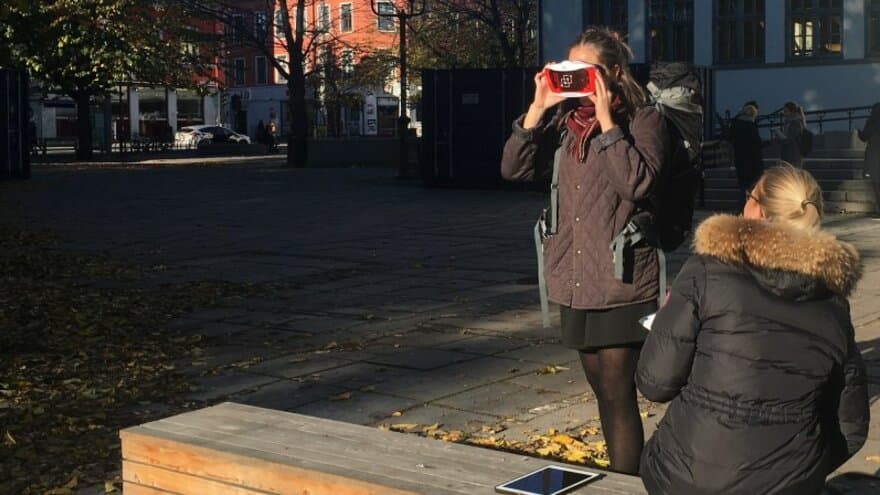Doctoral research conducts on-site experiments using VR technology to investigate ways to engage citizens in landscape design.
The on-site experiments aimed to compare VR experiences with static computer renderings as tools to assess visual properties and affective appraisal.
Additionally, they looked into user-experience (UX) in Smartphone-based VR solution.
The research team selected a hypothetical design proposal developed by landscape architecture students for Schous Plass, in Oslo. A three-dimensional model of the sites is used to generate both renderings and VR experiences.
Smartphone-based VR solution was considered the most suitable tool for such study, due to its portability and easy-use. The team took a set of VR headsets, as well as the static images, to the site and invited passers-by to join the study. After visualizing both types of visuals, the participants were asked questions. The data collected from the on-sites experiments are still under study. However, preliminary outcome shows the following:
- VR provides an opportunity closer to reality as the user can further explore the environment by looking 360 degrees around at the landscape;
- However, renderings appear to be more predictable as all information is given at once and the users know exactly how to use them;
- VR provides a sense of human scale, which enables a link between virtual and physical world;
- the interface and hardware still have some UX limitations, which still catches the users’ attention (e.g. navigation within the VR environment and interaction with the scene were not allowed);
- Some users encountered interface barriers at some point (e.g. teleportation system);
- Users do not necessarily react positively to overdetailed VR environments.
